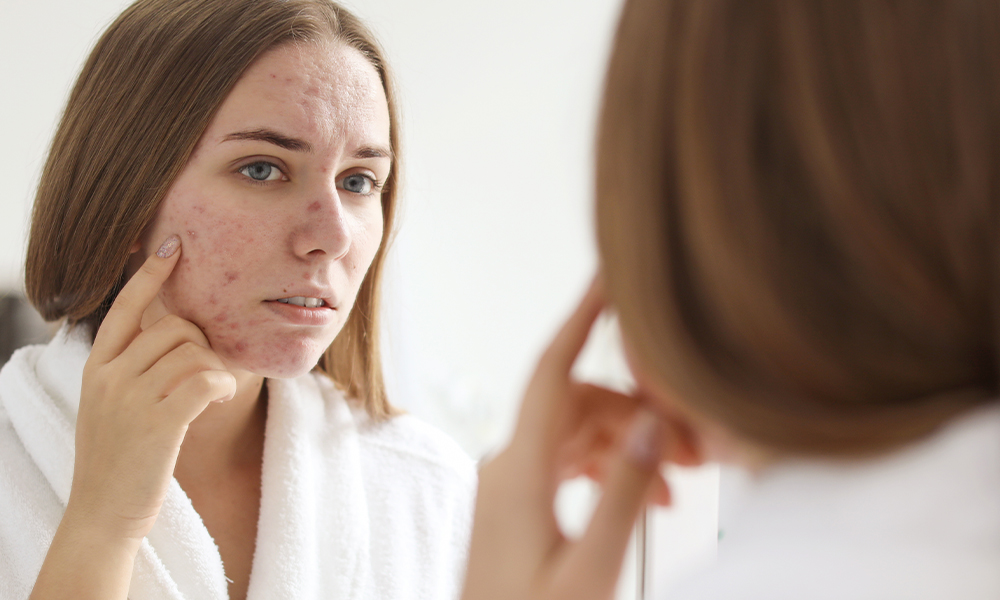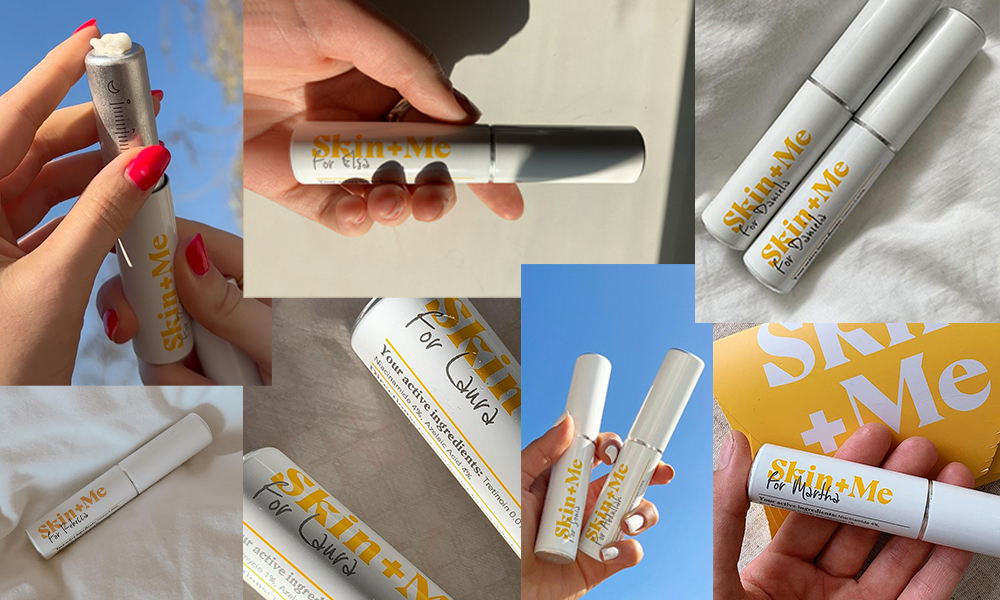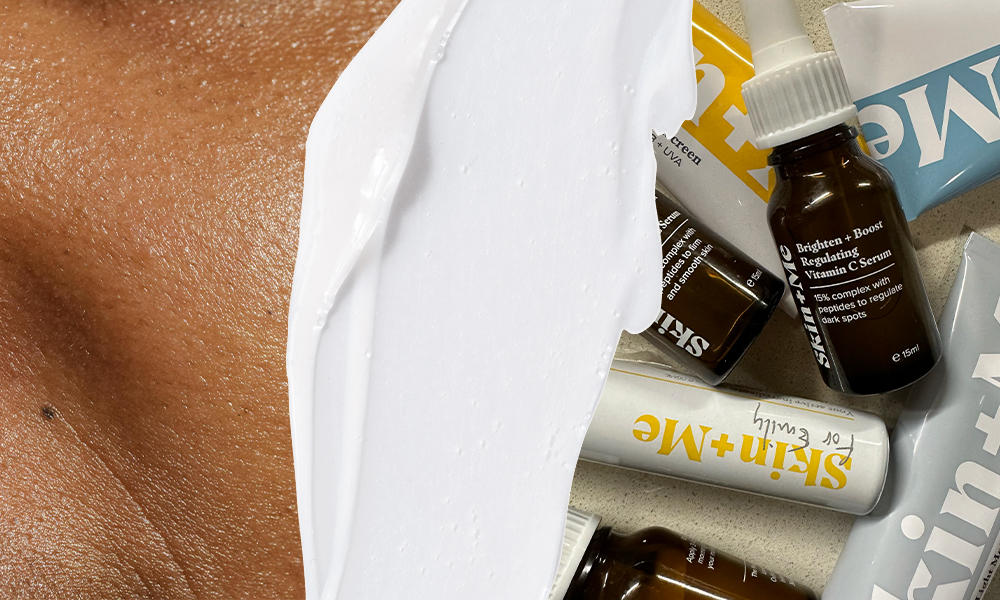Ask A Dermatologist: Do I Have Acne Or Rosacea?

Link to share article here:
How We Made Daily Defence Oil-free SPF 50 Sunscreen
If you haven’t met the newest member of the Skin + Me family, Daily Defence Oil-free SPF 50 Sunscreen, allow us to introduce you. This hardworking sunscreen is a multi-tasking wonder, providing protection against UVA and UVB rays all year round. It’s also perfect for all skin types and tones, drying down quickly for a barely-there feel that sits pretty under makeup.
So, you might ask, how did we make such a unique formula? On hand today we have Daniel, head of research and development at a global cosmetics consultancy and manufacturing firm. He’s ready to tell you all about how Daily Defence was developed, and what it takes to create The One.
How did you get into cosmetic formulation and what do you love about the job?
I actually fell into it a little bit by accident. I had a background in chemistry and one of my close friends’ family set up a cosmetics contract manufacturing and development business. At the time I was looking for a job and I thought it would be an interesting industry to get into. So, I joined the company, did a further diploma in cosmetic formulation and I have been there ever since – more than five years now!
I really enjoy the combination of creativity and science. In many ways it’s quite like cooking. There is a great deal of space for creative flair, but also you need a scientific background to understand what is going on at a molecular level and how various materials are likely to interact with one another.
What was the product brief for Daily Defence and how did you approach it?
The brief was for a broad-spectrum, oil-free sunscreen with a SPF value of at least 50 that was vegan and cruelty free. It couldn’t leave any white cast and had to have a smooth, dry finish without the oiliness of other sunscreens.
In the initial phase of development, we used computer simulations to determine if the proposed combination and concentrations of UV blockers could achieve the level of SPF required, and to optimise these for skin feel, efficacy and commercial viability. We then did a lot of testing, first internally, to find out what we would change, and then got feedback from the team at Skin + Me as well. We work on a very iterative and collaborative basis, gathering feedback and making changes guided by this data, all the while getting gradually closer to the ideal product.
What was challenging about this particular formulation?
There were two big challenges. The first was texture, because a lot of the UV blockers are lipophilic, which can tend to leave the final product feeling somewhat greasy. It can be quite challenging when you’re trying to achieve a high level of protection like SPF 50, as this generally requires the inclusion of high concentrations of these UV blocking materials. The key to solving this lay in finding the best emollients to include alongside the blockers, as well as optimising the relative inclusion levels of these materials.
The other issue we had with some of the versions we tried was that it would pill on the skin, rolling into little balls whilst you were applying it. This was a challenging issue to solve, as even with the same version some people would experience this and some would not. We also found that the degree to which we saw this was influenced by other skincare products that people were using. This was resolved after a number of iterations through careful tweaking of inclusion levels – we even moved to an entirely new system of UV blockers
What ingredients did you want to include in the formulation?
For an SPF product the key materials are UV blockers. These come in two types; mineral blockers which scatter and reflect UV light, and chemical blockers which absorb the UV radiation.
We wanted to avoid mineral UV blockers in the first instance because the brief specified that the product should leave no white cast on the skin, and mineral sunscreens do tend to leave that. We were therefore very much focused on chemical sunscreen blockers, and there are quite a variety of these available today due to significant progress in this field in recent years. It was a case of selecting the best ones for this product, balancing the right skin feel, the right price, and also considering supply chain management.
Regulations around creating an SPF product are quite strict. There are limitations around the filters that we use and when you are trying to achieve SPF 50 it is necessary to use a combination of a few different ones. The regulations specify exactly which materials are permitted for use in sunscreen products and the maximum levels at which these may be included.
In terms of the skincare side of things, we were keen to make sure that we included ingredients that would provide moisturisation and other added benefits to go alongside the SPF protection.
We utilised niacinamide, which is a very well-respected skincare ingredient and one with a large amount of efficacy data behind it. It’s a form of vitamin B3, which helps to boost collagen production, reducing wrinkles and hyperpigmentation. It also brightens the skin and helps to regulate sebum production. It’s a really good all-rounder, and one that the Skin + Me team was keen to include.
We also included Vitamin E, which is a natural antioxidant. It’s a multi-purpose ingredient that reduces inflammation, combats sun damage in the skin and also enhances product stability.
What standards do sunscreens in the UK have to meet?
At the moment the UK sunscreen standards are still the same as the standards across the EU. There is a requirement to provide data to demonstrate that it does offer the SPF value that you say it does. This is done through two types of tests.
The testing for UVB protection is conducted in-vivo, meaning that a panel of volunteers is used for the testing procedure. Carried out to ISO 24444:2019 specifications, the volunteers have a specified quantity of the sunscreen applied to their skin (usually on the back) and then the area is exposed to a measured dose of UVB light. The difference in the dose required to produce erythema (sunburn) on the area treated with sunscreen compared to an untreated area is used to calculate the SPF value.
Testing for UVA protection is carried out in-vitro, which means that it is carried out in a laboratory environment using a spectrophotometer rather than on a panel. It is necessary that the UVA protection is at least one third of the SPF value in order for the product to be classed as broad spectrum.
Where do you think skincare is heading in the future? What trends, ingredients and products should we be looking out for?
People will be looking for a more stripped back routine – I don’t think we’re going back to the twelve-step routines of a few years ago. I think people will want multi-functional products that offer a variety of skin benefits, such as SPFs with moisturisation properties, and cleansers that provide conditioning to the skin.
In terms of specific ingredients, I think we will continue to see very effective ones like niacinamide, ceramides, retinoids, vitamin C, and hyaluronic acid being widely used. These have years of clinical data backing up their efficacy and the evidence in favour of their use is overwhelming.
There is also a current trend for fermented products, and there are some really interesting new materials being launched all the time that utilise the principles of fermentation to create effective active molecules from natural starting materials, which in many cases would otherwise have gone to waste.
I also don’t think the focus and popularity of natural products is going anywhere. However, I think consumers are becoming more aware of the greenwashing that has been carried out in some areas of the industry, and I think it’s increasingly important for brands to be genuinely transparent because consumers are increasingly well-educated and know what to look out for.
New to Skin + Me? Get your first month of personalised skincare for £4.99 with promo code DOSE – complete our quick consultation here.
Looking for a routine refresh? Add the Dream Routine to your Skin + Me subscription.
In need of a restock? Head to The Skincare Shop for one-off purchases of your Routine Essentials.



